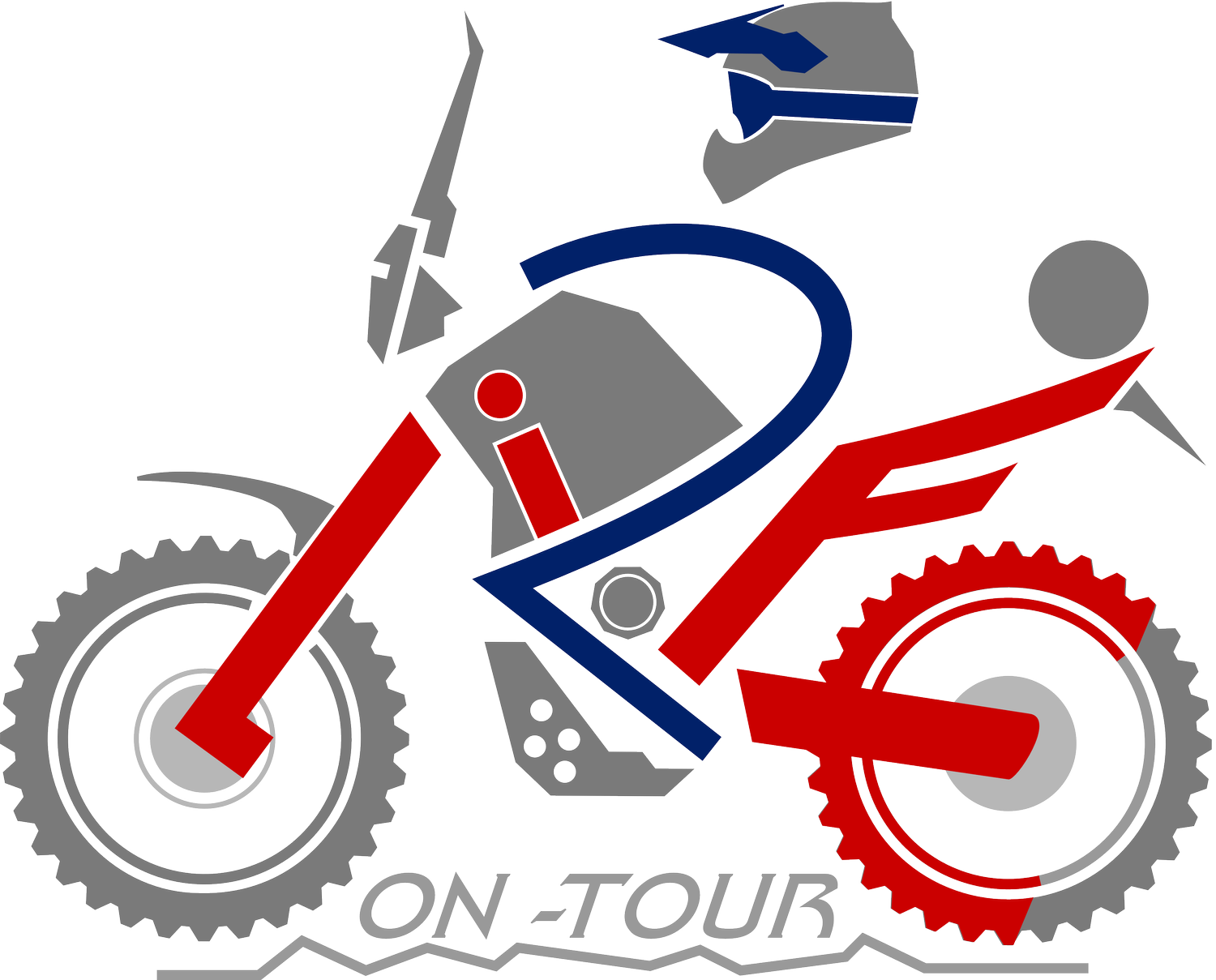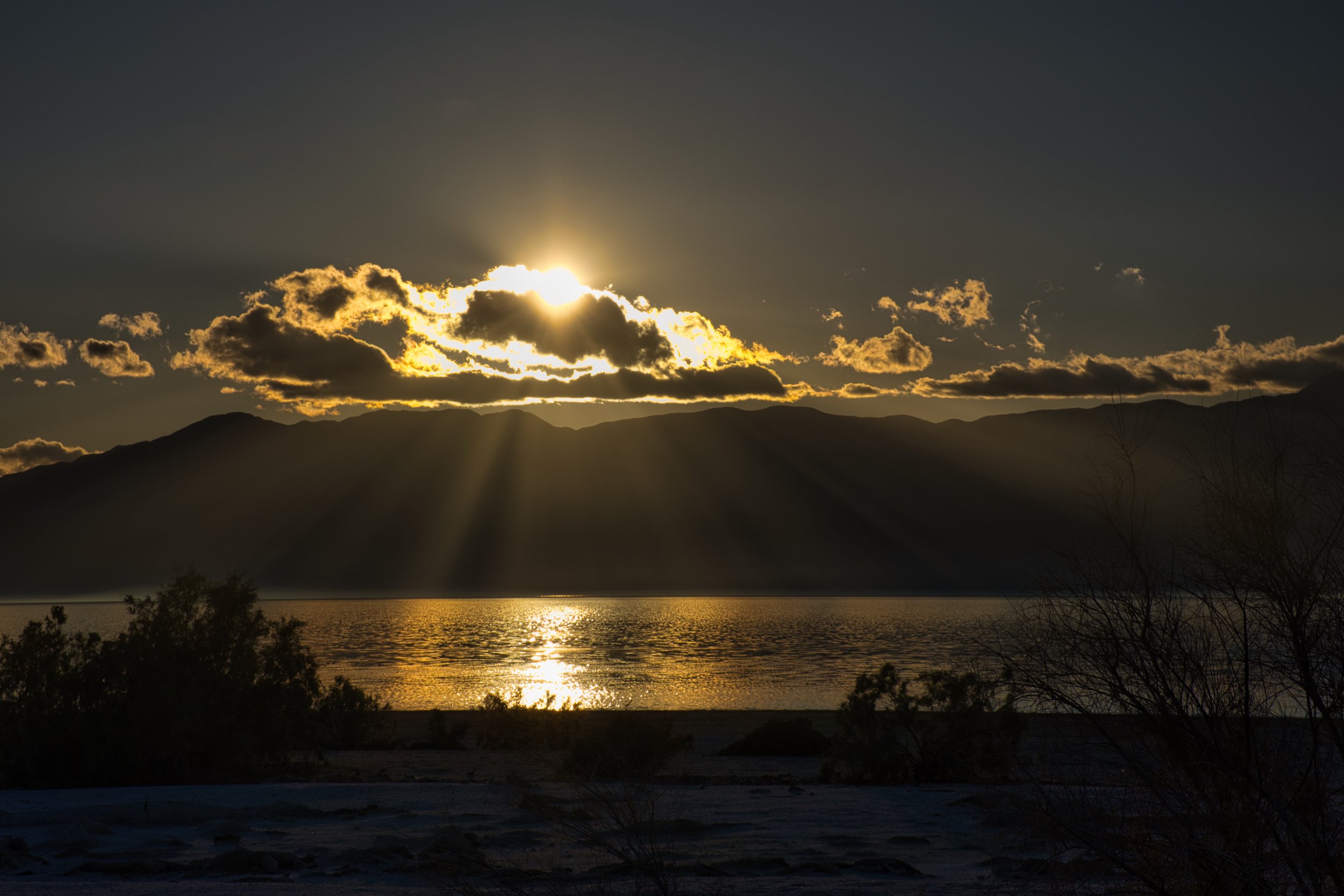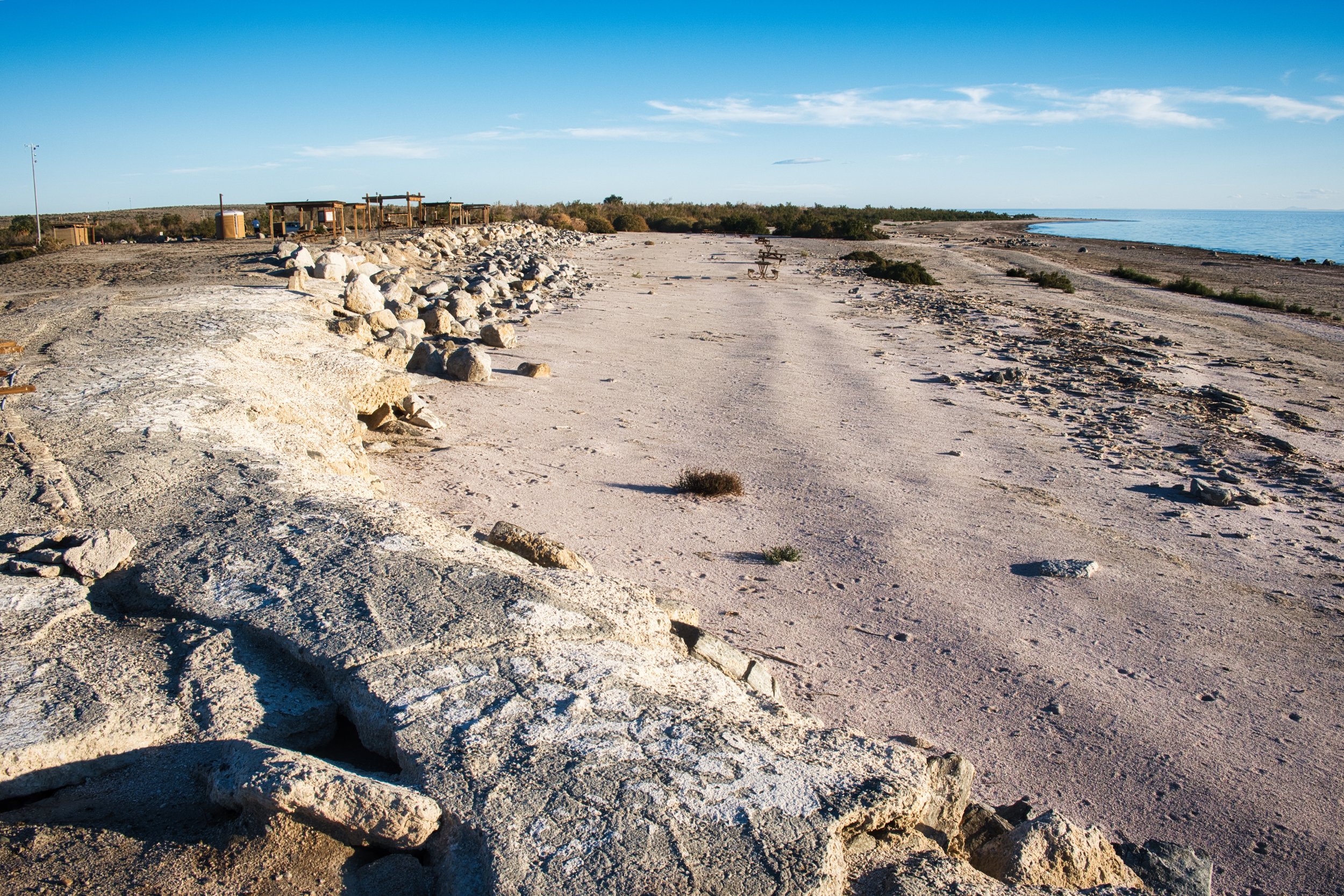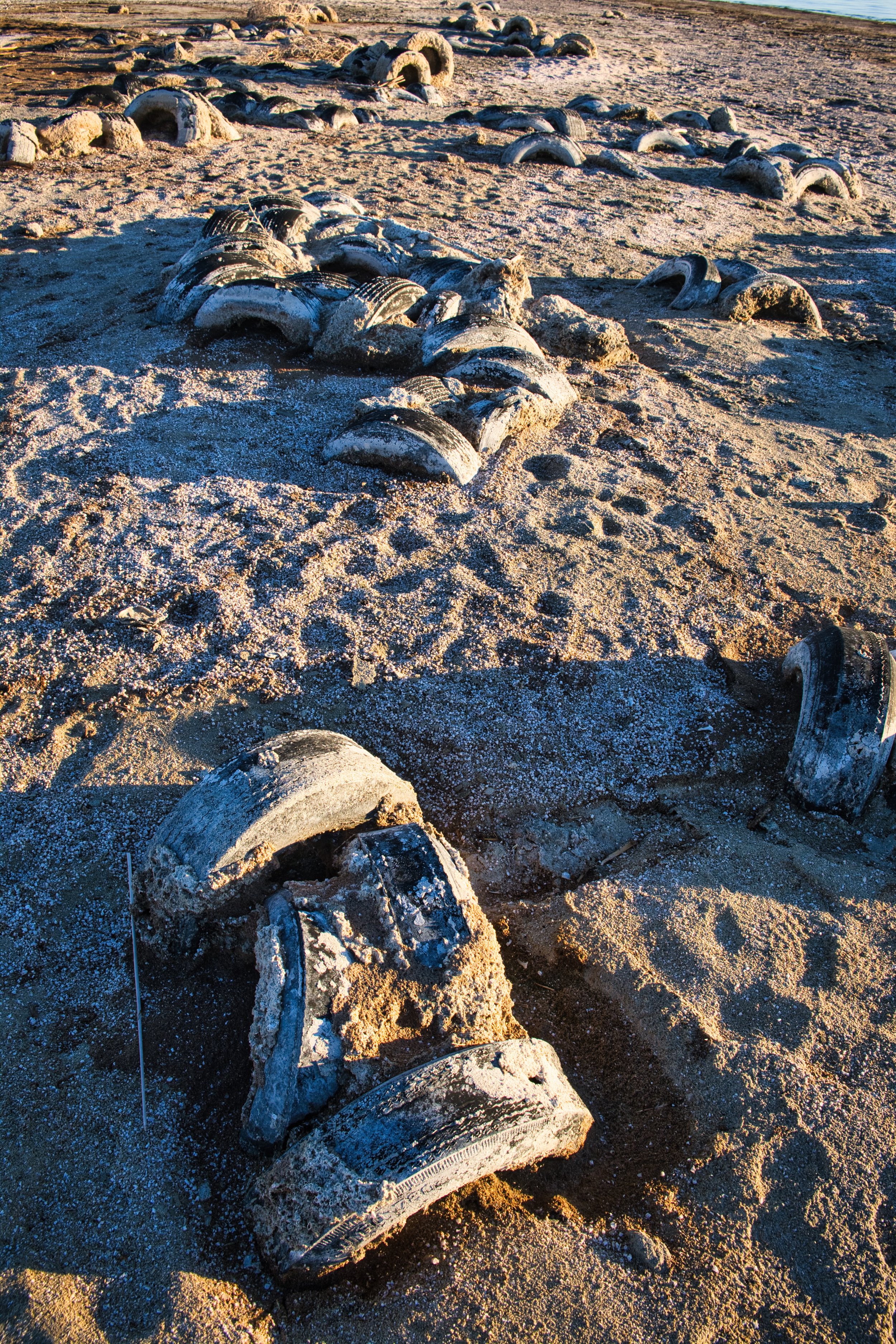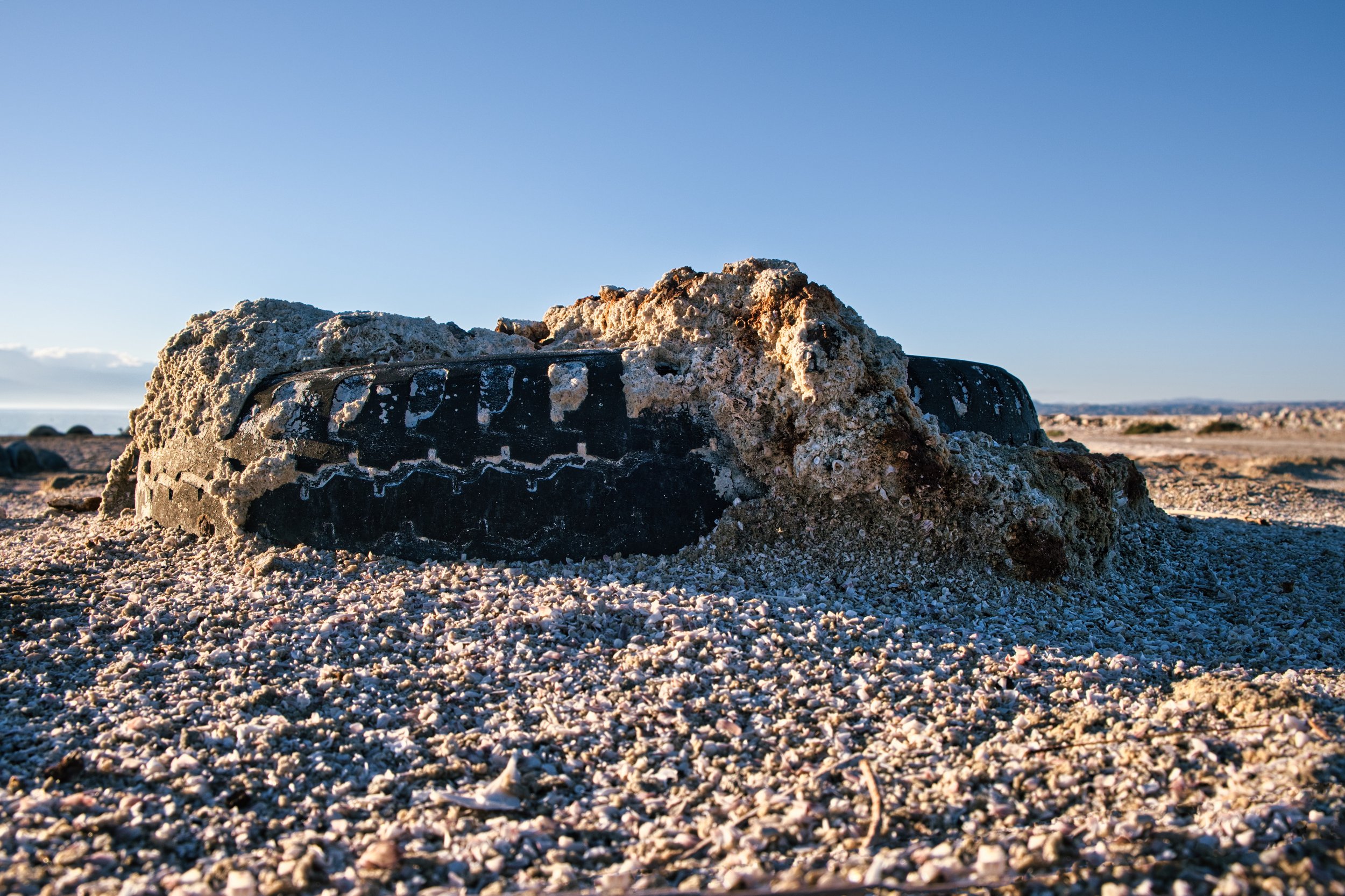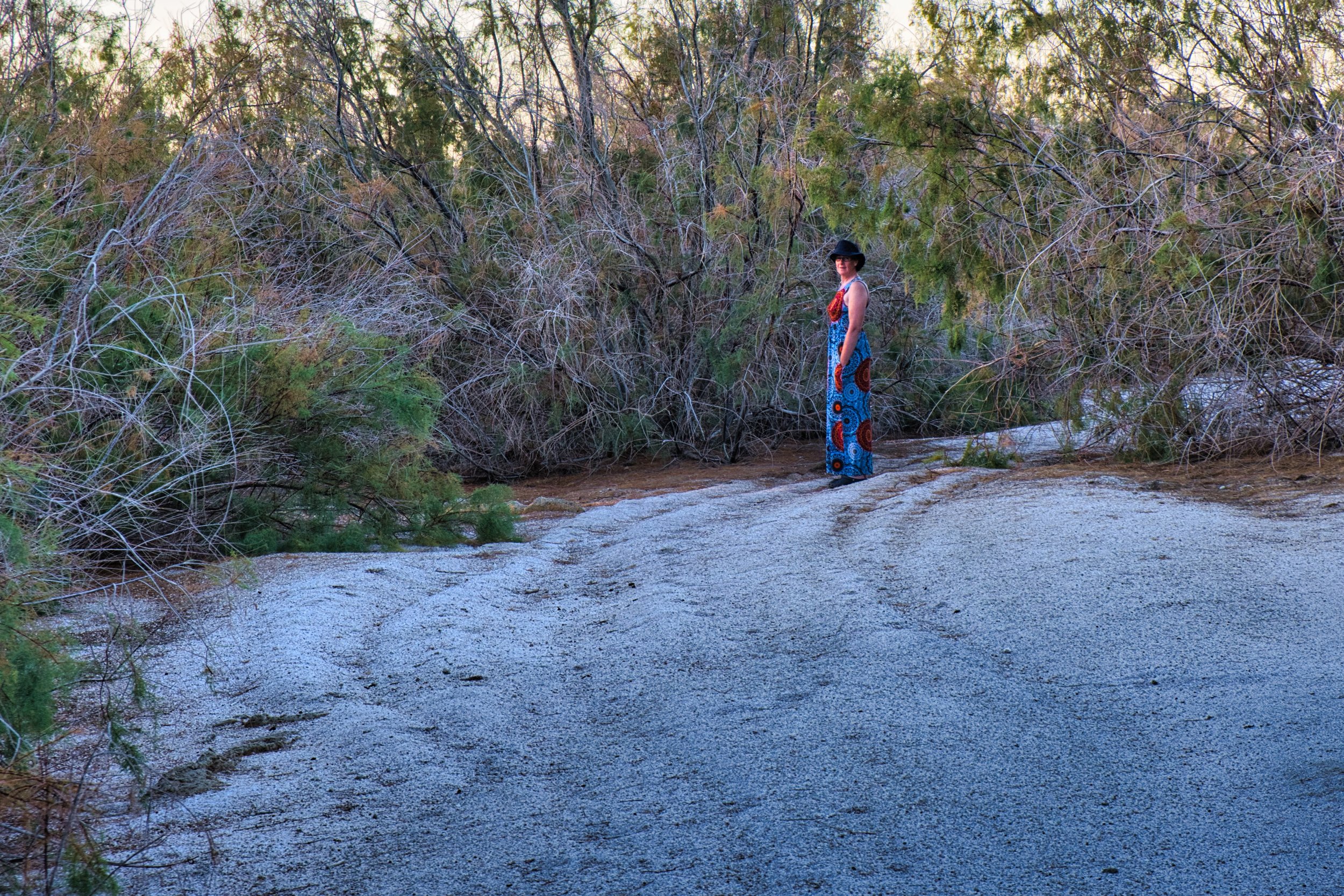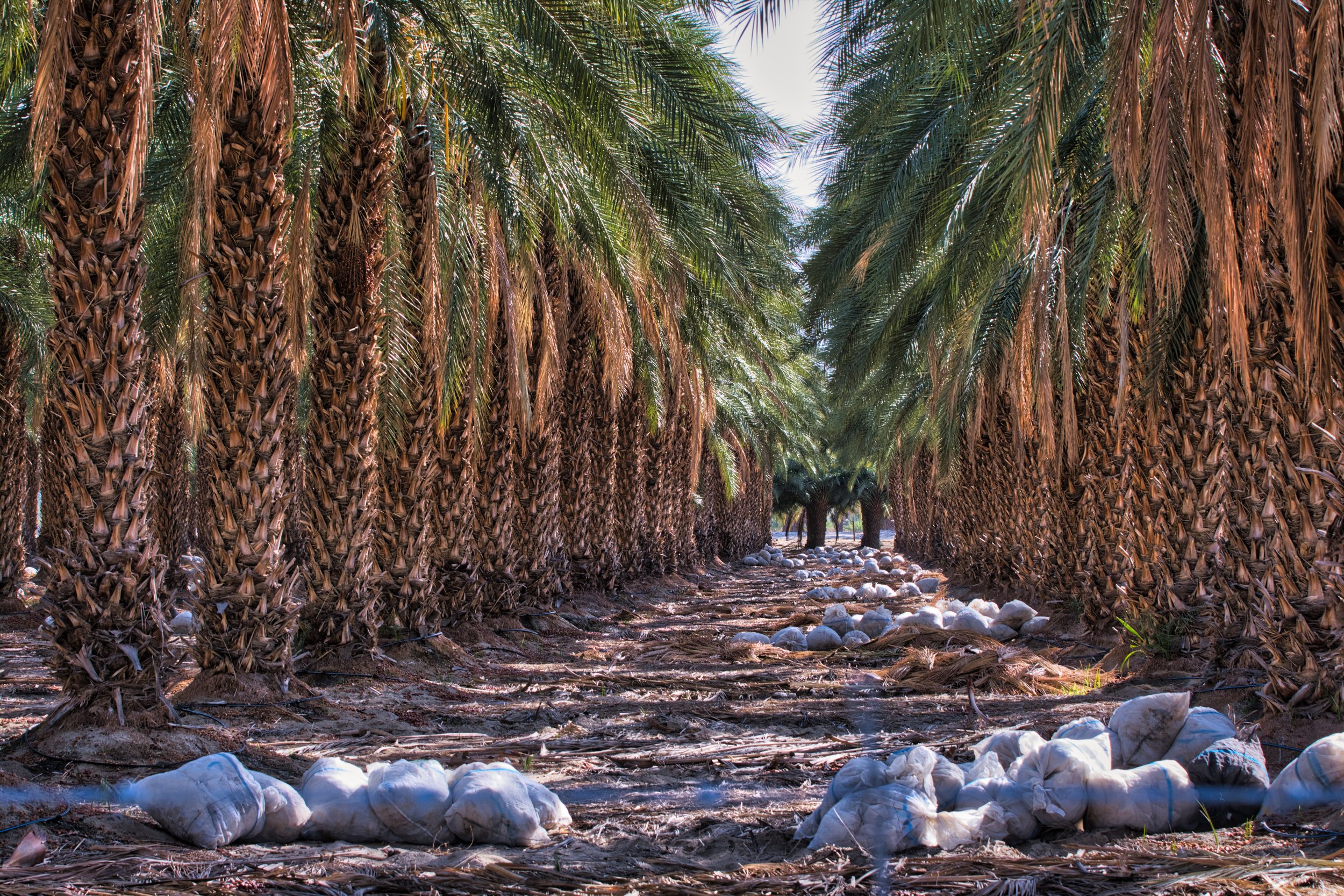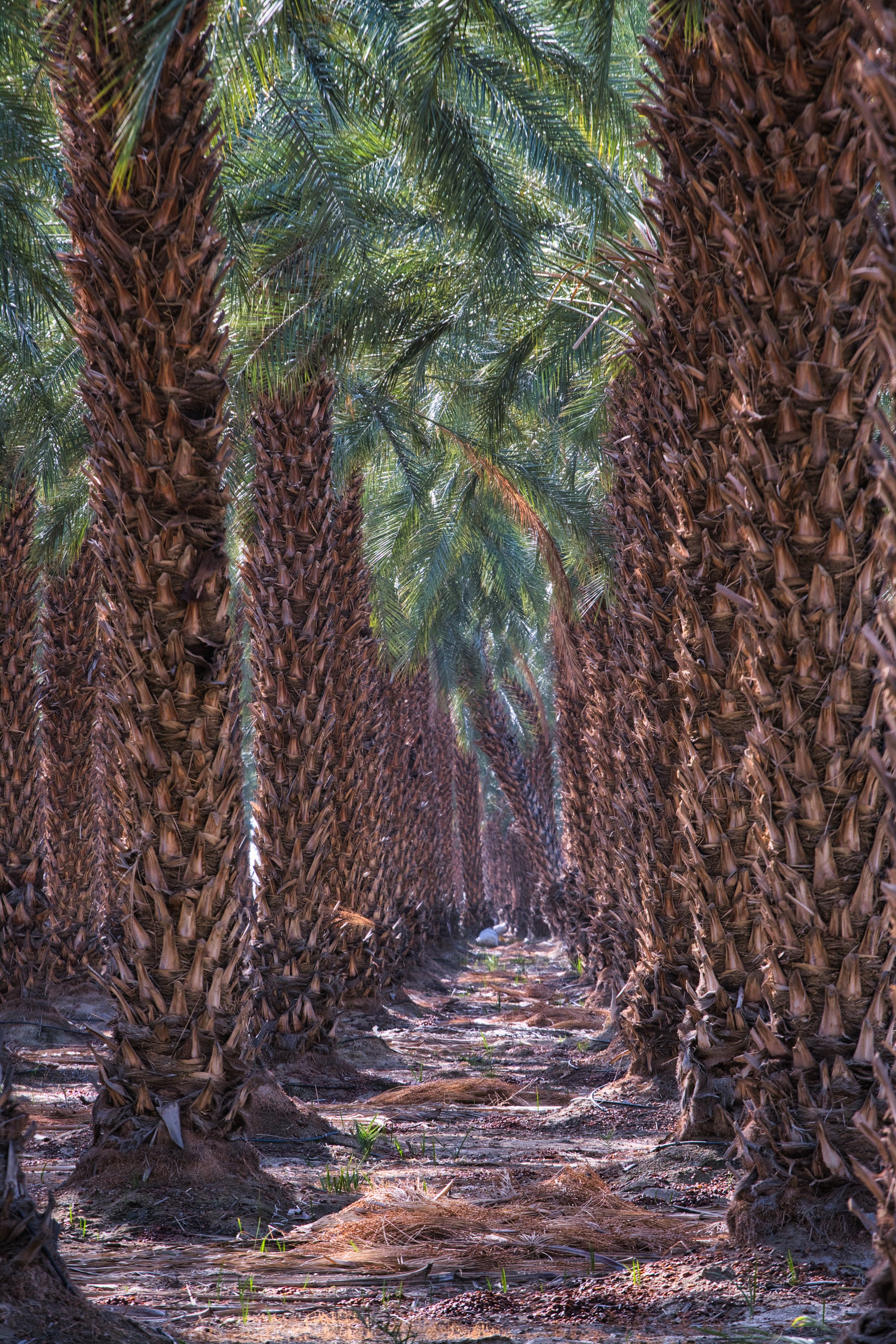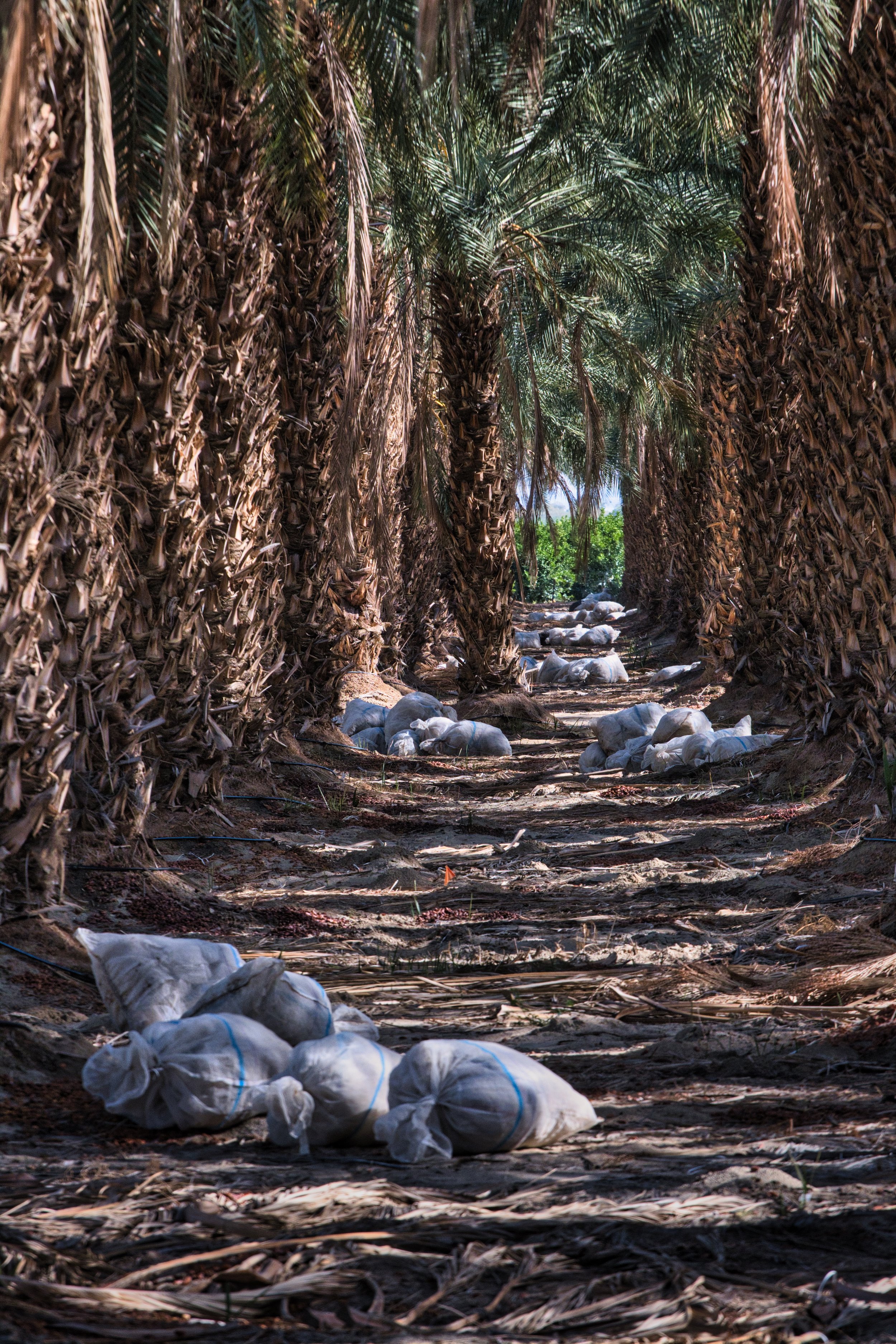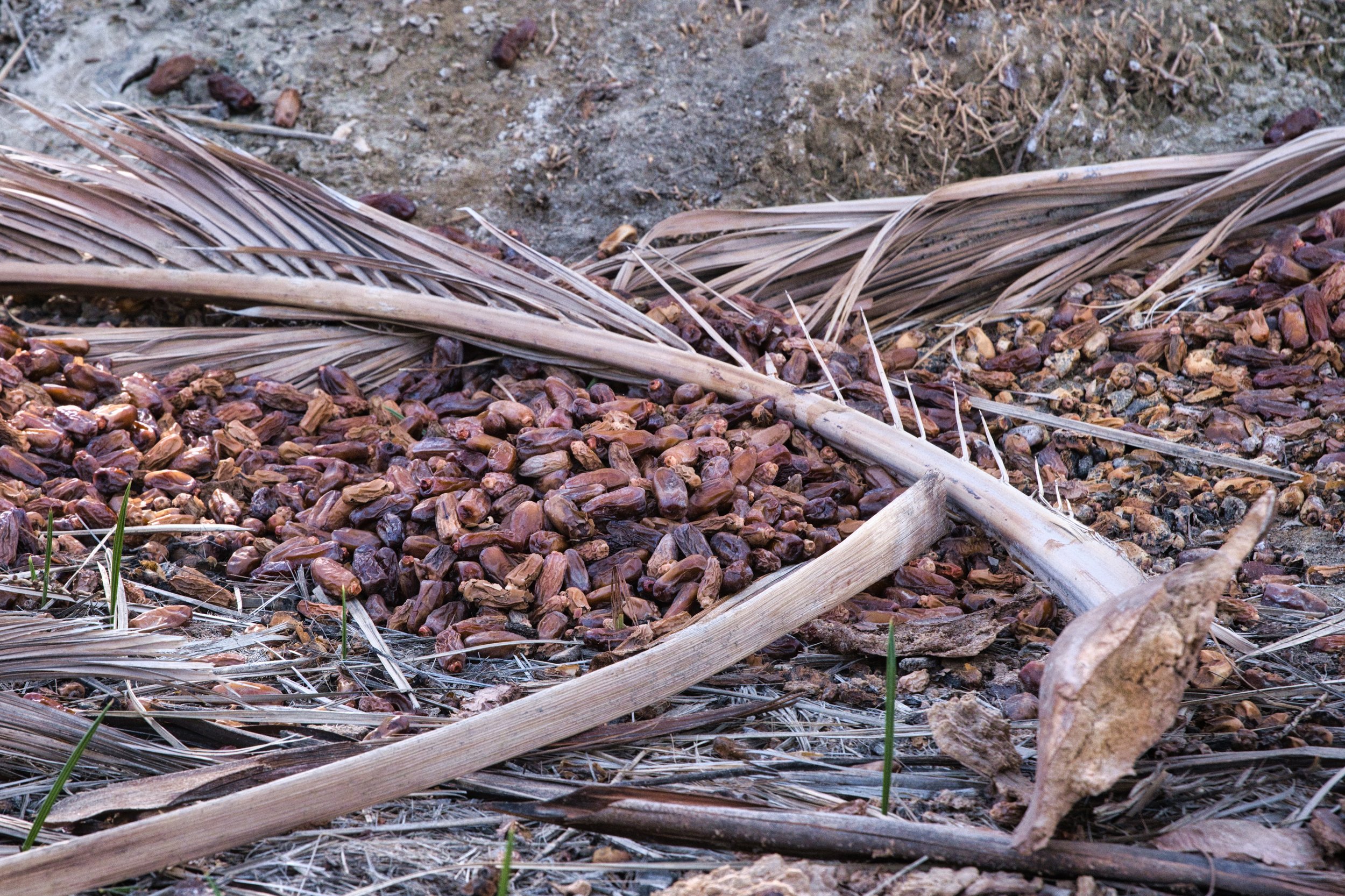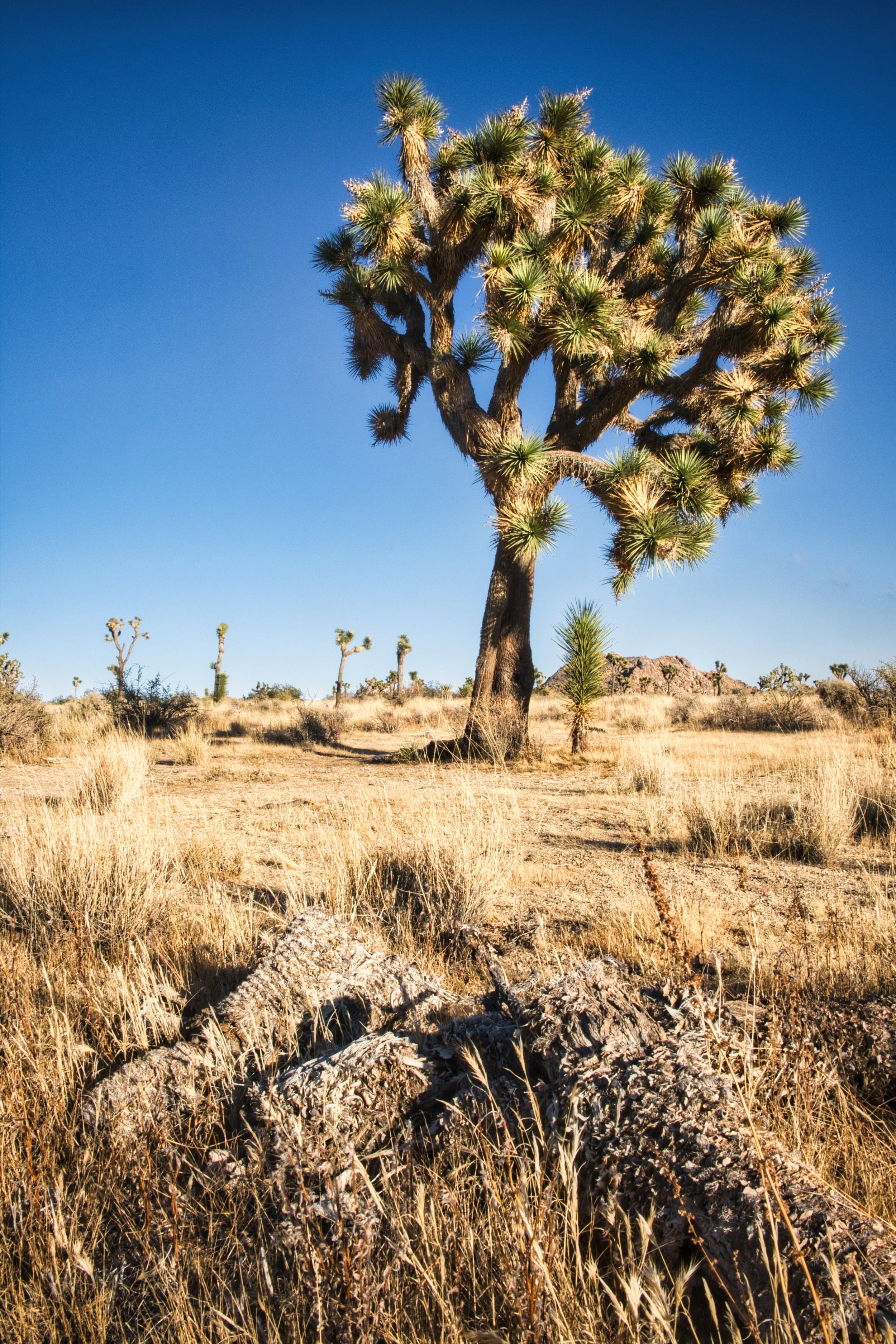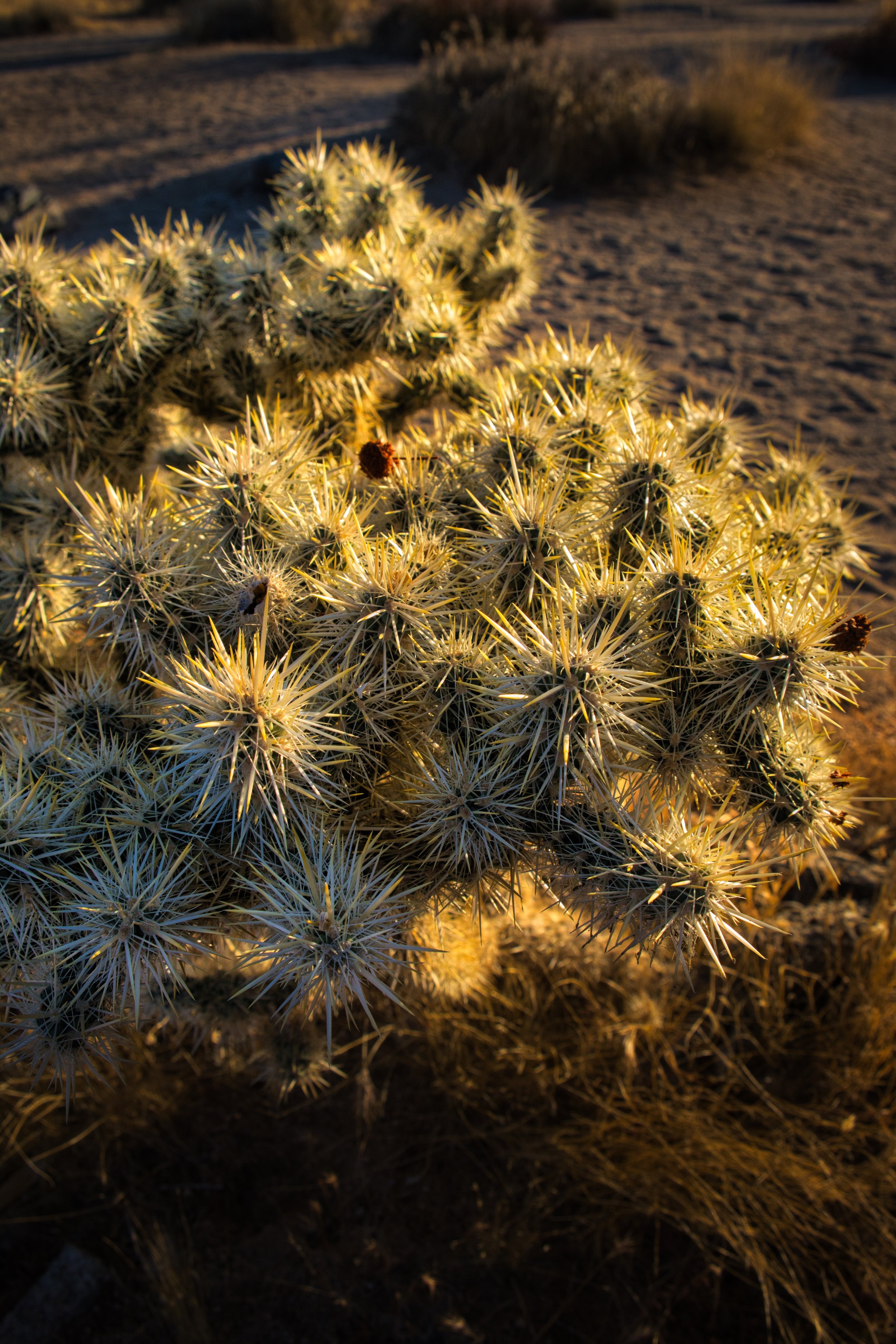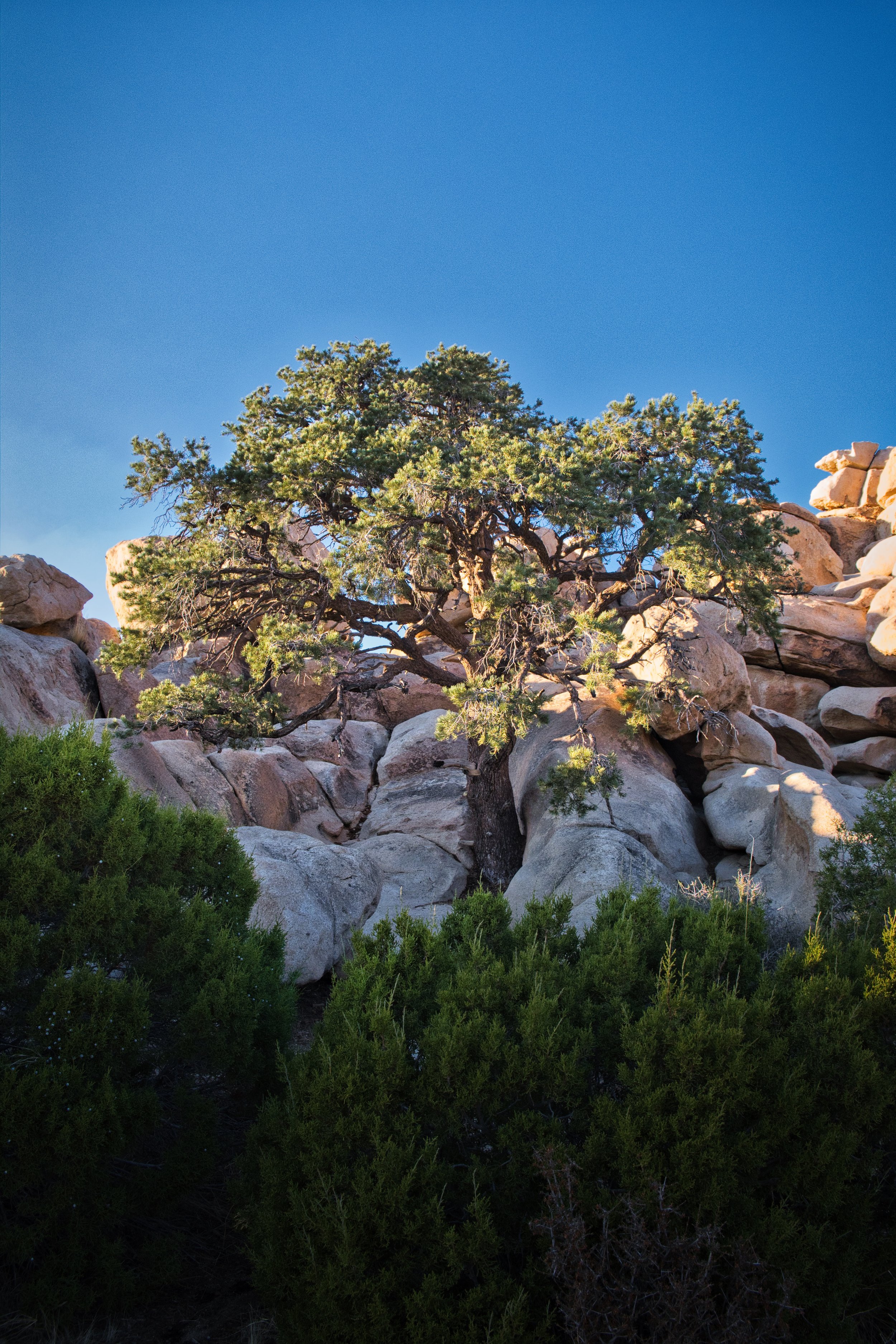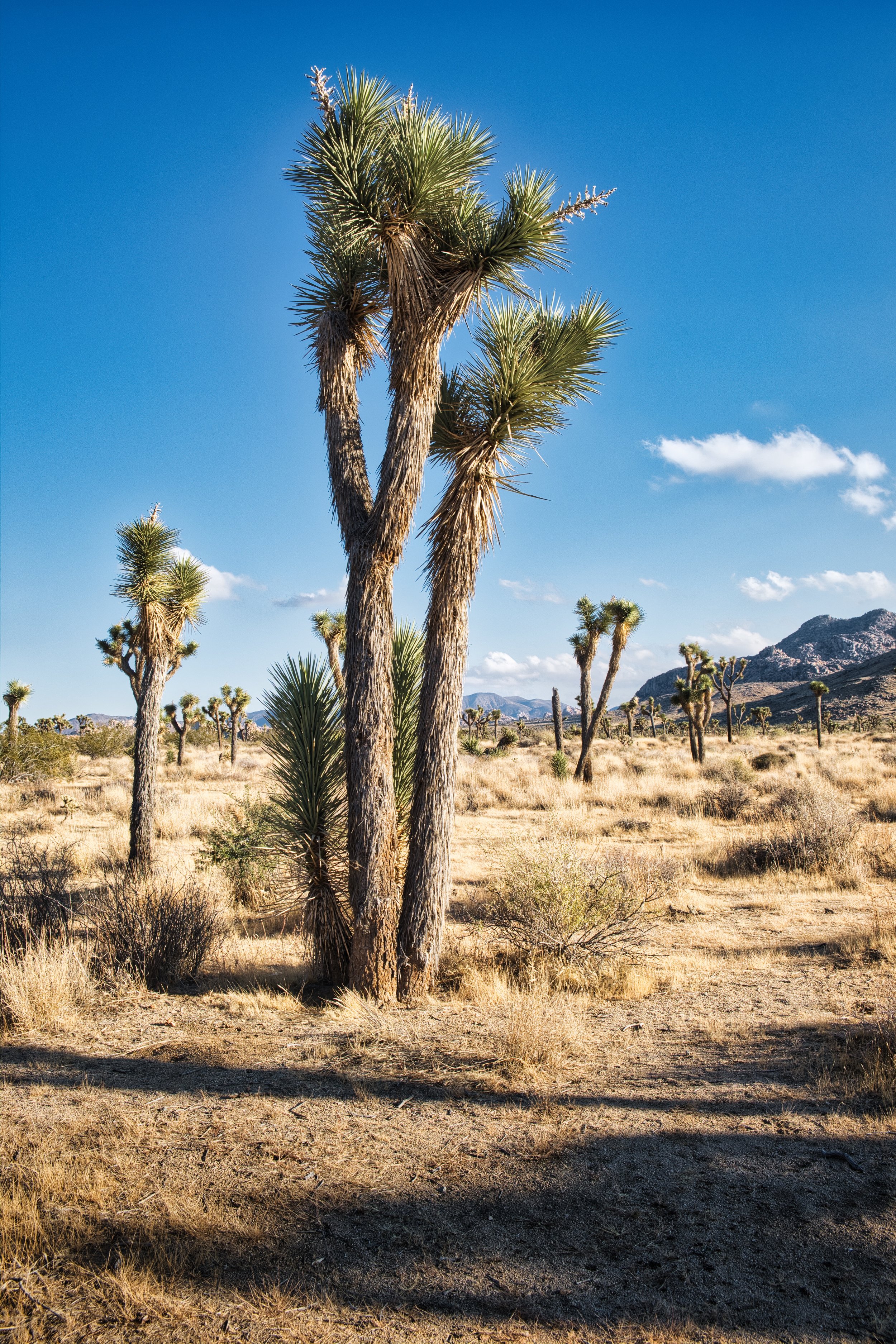Blown out of the Desert
Starting with the smalls…
On the face of it, Salton Sea seems a bleak and rather boring place. The campsite was virtually empty and the parking lot for the visitor centre was a vast expanse of concrete with faded lines and weeds breaking up the solid surface as nature says “this is my place”!
We knew from the Californian State Parks website that we were required to book at least 2 days in advance and, whilst we had tried, we had been unable to do so. The park entrance was open but no one was to be seen. We checked the dry-wipe board to see what pitches were booked out (not many) and then rode in to find a suitable spot.
Having decided on a pitch that radiated outward from the circular road, away from the few other campers and firm enough to take pegs, we parked the bikes to claim the site and setup camp as the warm sun dropped toward the distant mountains the other side of Salton Sea. We were 100 metres or so away from the lakeside, away from the few day-visitors that had vans beside the covered benches.
With the tent pitched and Isi sorting out the bedding, I rode the 1/2 mile back to the Park entrance, enjoying the wind in my face, the tears in my eyes and the braaap of the exhaust in my ears - it is so nice to ride the bike in shorts and crocs!
Still there was no one at the entrance and as I looked around for a pen to add our details to the dry-wipe board, a ranger pulled up in his car and asked what I was doing. When I explained what we had done, he said I needed to to book online and give 2 days notice. The rules were the rules. I asked if the place was booked out, to which he said no. I asked if our pitch was booked out, to which he said no. This was going to be hard work…
Finally, he conceded we could stay as the Park was not busy and we agreed on a price that was cheaper than booking online. Paying by credit card further taxed his abilities, as cards should only be used for paying online and when I said we had no cash (I lied as I like to keep cash back for coffees etc.) he said he would be able to accept cards but it was not normal. I should’ve been surprised when I saw the office was fully equipped with a card reading machine but, by now, I had come to realise he was one that had to play by the rules and rules were the rules. I was challenging every process his training had drilled in to him and to which he relied on to get through the day.
With a smile and a wave, I left him sat in his office, looking a little less confident than when I turned up - not my fault, though I did have a chuckle with myself as I rode back to camp.
Home by the tracks
The ranger would have us believe it was a busy campsite…
Yep - real busy!
Salton Sea is not a sea. It doesn’t have a natural water source and it doesn’t have a water outlet. It is an oversized puddle that used to be filled by the Colorado river until the river changed its course, thousands of years ago. With no water feeding it, it dried up and became a deep depression in the valley. In the early 1900’s, the Colorado river was partially diverted to provide water for fields to the North. During a high spring flood, the river burst its bank and the water filled up the Salton Sea basin. It took two years for the artificial river bank to be fixed and, by this time, Salton Sea had filled up.
Fixing the river stopped the majority flow of water and it would have dried up well before the end of the 20th century, had it not been for the agricultural irrigation run-off. The Salton Sea maintained a balance between evaporation and irrigation run-off and, being in close proximity to Los Angeles, Palm Springs and Hollywood, all the movie stars, politicians and the ‘well-heeled’ would treat Salton Sea as their playground. Hotels were built. Marinas were populated by pleasure craft and the sea became the place to be. As agriculture learned to better use the irrigation water, there was less run-off and what did run-off had higher concentrates of chemicals. And so the water levels started to drop, leaving businesses, hotels and marinas high and dry - literally.
That evening, we walked off the top of the bank and down on to the lake bed, crunching our way through millions of small shells. We couldn’t get close to the waters edge, as the shells gave way to slippery, smelly mud that could be deep with the next step - footprints before us paid testament to those that had been braver or more foolish. The shore was littered with up to 100 ‘clumps’ of tyres. Closer inspection would show they were bolted together, some through lumps of concrete or heavy metal bars. At the time, we could only guess at why they had been dumped.
For a dead sea, it can look rather spectacular.
Shell encrusted foreshore where boats once rocked.
As close as we could get to the waters edge.
We just couldn’t figure out why there would be tyres chained together.
Tyres and lumps of chain lay encrusted on the shore.
Nature aways finds a way to re-use the dried out shoreline.
Isi and another of her naps. ;-)
The following morning we wandered over to the empty visitors centre, beside the near empty vast carpark, with one RV parked in the far corner. There were 2 immaculately dressed rangers sat behind the desk and they greeted us with a smile - they really did not get many visitors! The photos and information on the boards showed various aquatic animals but, we were to learn, the boards were outdated and the only animal that still lived in the water was a shrimp that could withstand the very high salt content and the chemicals from the agricultural irrigation run-off.
The collapse of the eco-system had led to many bird deaths as disease and lack of food took its toll on those that had come to call this home. Strong winds would whip up the dust from the banks, covering local communities with toxic dust, causing communities to move out, leaving the vibrant buildings to weather and age. The dust would sometimes reach LA and residents would complain of the bad smells. In 2020, a Palm Springs magazine declared Salton Sea as being the biggest environmental disaster in California.
Reminiscent of the deserted habitations of indigenous populations scattered across America, the yacht club, children’s playgrounds and fancy hotels were all that remained of those that lived, laughed and loved within their walls. Mans actions over 100 years ago had led to the rebirth and re-death of Salton Sea.
However, there was some life still…. The harbour has become a haven for some freshwater invertebrates, feeding numerous aquatic birds, from the natural spring that continues to flow. The harbour mouth has silted up, trapping the fresh water and creating a small oasis. The trickle of water that finally reaches the Salton Sea is not enough to stop the continual reduction of water. In time, the Salton Sea will become a barren trough of rock, dust and toxic chemicals, with the occasional puddle forming after the infrequent rain in the area.
Just as we had seen other ghost towns in the desert, this was on a grand scale and we admired the history and beauty of decay and natures return to normality. We were both effected by this rather unique place.
The fresh water harbour next to the visitor centre and the empty car parks
The fresh water outlet that trickles to the sea…
Following on from the back problems I had in Canada a few months previous, I needed to make a phonecall to the UK but, try as I might, I could not purchase the International add-on for my US SIM card. Having tried everything, we decided to take a ride in to the nearest AT&T office, just the other side of Indio. Turns out, as a non-US citizen, I can’t be trusted to make International calls with a US SIM. Not sure why but it could be a barrier to stop illegal immigrants from phoning home when they shouldn’t be in the country anyway? I don’t know…
Having found this out and already being out on the bikes, we decided to take the long road back to the tent and take a look at some of the crops being grown. There were massive orchards of orange trees but the most impressive were the date palms. A typical mono-culture crop (like most farming) where the land is dedicated to just one crop and pests/weeds are managed to the best advantage of that crop (hence the toxic water getting in to Salton Sea). Date palms are no different except the size of the tree. All planted in neat rows, each with a water pipe dedicated to provide water to just the one tree and in a controlled manner (hence why the water run off in to the Salton Sea is significantly reduced). As the dates mature, they are enclosed in a plastic bag to keep them from ‘pests’ and keep them as fresh as possible. It all looked very tropical but, in reality, it was just another crop devoid of any bio-diversity. A desert by another name.
What a beautiful sight!
Bags of dates.
Quick piccie
A mono-culture of tastiness.
Majestic
Harvest complete
Some are left for nature to recycle
As is our norm, we soon decided to extend our stay. I would say it was because it was peaceful but, in reality, the nights were disturbed with the frequent trains that would announce their arrival with very long and very loud blasts of their horns, as they passed over two unmanned level crossings, accompanied by the clackerty-clack of the 200+ wagons and up to 5 engines roaring their passage through the dark, empty desert nights. Additionally, the lorries and cars on the parallel road would stray across the indented central line or overtake other vehicles with a ‘drrrrrr’ that would last the time of their digression from their carriageway. We quickly became accustomed by these sounds and would try and guess the number of engines or the type of vehicle.
We would count how many engines.
We then decided to visit Joshua Tree National Park. As is our norm, we were ‘late’ leaving and, whilst we were not on a time schedule, we knew it would be a long day. Trusting Calimoto, and with Calimoto doing what it is designed to do, we took the longer route through the towns of Palm Springs and Desert Hot Springs, then climbing up through Yucca and on to Joshua Tree.
It was during this ride that we passed a KFC and I said to Isi over the comms, fancy a spot of lunch? There was no reply and I figured I had pushed my luck, the answer was no, and we had to press on. When we reached Joshua Tree, we pulled in to the visitor centre car park and, as we removed our helmets in the hot mid-November sun, we both stated how hungry we were. I asked what was wrong with the KFC we had passed a few miles down the road, to which Isi said she had replied with “if you think it’s the right thing to do?!” The comms had failed to deliver Isi’s answer and she just thought I hadn’t bothered to reply…
To this day, I hold a serious and heartfelt hatred for the Scala that had failed to deliver Isi’s answer to me and whose actions led to us each having a tin of warm tuna whilst hiding in the shadow of a bush. My depression took a number of days to lift as Isi would ask what was wrong and I would spit out between clenched teeth ‘bloody Scala!’ (With a hint of a grin to show I was starting to find it funny…)
And so we marvelled as we entered Joshua Tree, named after the Yucca plant called the Joshua Tree. Joshua Tree National Park includes parts of the Mojave Desert, with two ecosystems based on elevation. The higher elevation has the majority of the Joshua Trees as they proliferate amongst the higher peaks and passes that overlook the lower Mojave Desert of smaller plants. The area has seen many different tribes of indigenous people as they settled and then moved on. Descendants of these tribes have reservations in the surrounding areas.
Those bikes get everywhere…
Joshua Tree
I had to ask where her bike was…
Cacti
Another cacti
A tree
Joshua forest
Weather-beaten rocks
Having stopped a number of times to take photos and enjoy the scenery, we found ourselves descending in to the lower desert as the sun was setting. Whilst the sunset was glorious, it gave way to night very quickly and with it, a desert mist that obscured our vision and made the ride along the small twisty road cold and a little dicey, to say the least. We have a rule not to ride in the dark, particularly in areas where animals can appear out of the night and pose a real threat of an accident. In addition to the potential for an accident, we were running low on fuel and knew we had to find some before we got back to the tent.
View from the top with the LA pollution adding to the sunset
Chasing the shadow
Thankfully no accident on the unlit desert roads and, when we reached a main highway crossing our intended path, we agreed we would need to join the stream of cars and trucks heading to the bright lights of Indio and a probable gas station.
As anticipated, we left the highway exit and dropped in to a gas station forecourt. It was one of those where you had to pay up front before filling. However, they could not accept any of our cards and with a hint of anger and much desperation, our tired minds searched Google maps for another gas station of an alternative brand. This proved to be the right thing to do as we later found out that that brand did not accept cards that did not originate from the US…
A few nights later, we were awoken by a really fierce wind that howled across the desert, masking the noise from the road and rail and bending the tent in half. The wind would blow fierce for an hour and we would spend our time either lying in bed watching the tent bend under the force, or I would stand in the porch holding the tent as upright as I could. Then, just as quick as it arrived, it would disappear and sleep would return to be broken by the next fierce outburst.
Morning came with bright sunshine and the occasional puff of a small breeze. We were both shattered from the night before, but relieved to have survived and nothing was lost or broken. However, just as we were preparing a late breakfast/early lunch, the wind picked up again and as Isi desperately grabbed at the washing and rescued the lunch, I stood on the outside of the tent and held on. Dressed only in my bathrobe, I held on for over an hour, as the wind tried to take the tent from me. Once again, just as soon as it arrived, it disappeared and allowed us time to have that late lunch we were desperate for.
Mosko helped me keep the tent up
That night, the winds picked up again and I stumbled from the bedroom to hold on to the porch, shouting absurd obscenities to whichever gods would dare to listen and, when it eventually died down, I fell in to a troubled, broken sleep. As I opened my eyes on one occasion, I asked Isi why she was awake and on her phone when it was still dark - she was on Booking.com, looking for a suitable place to stay for a few nights and get us out of the windy desert. Neither of us could cope with another night and, I believe, Isi was worried about my sanity…
And so it was, the next day, we broke camp and left.
So, it was off to Palm Springs and a pool to wash the desert dust away…
The sun sets on Salton Sea…
